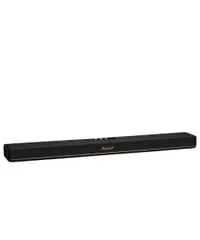I test soundbars for a living — and my favorite of 2025 isn't made by Sonos, Bose or Sony
The Heston 120 is way underrated
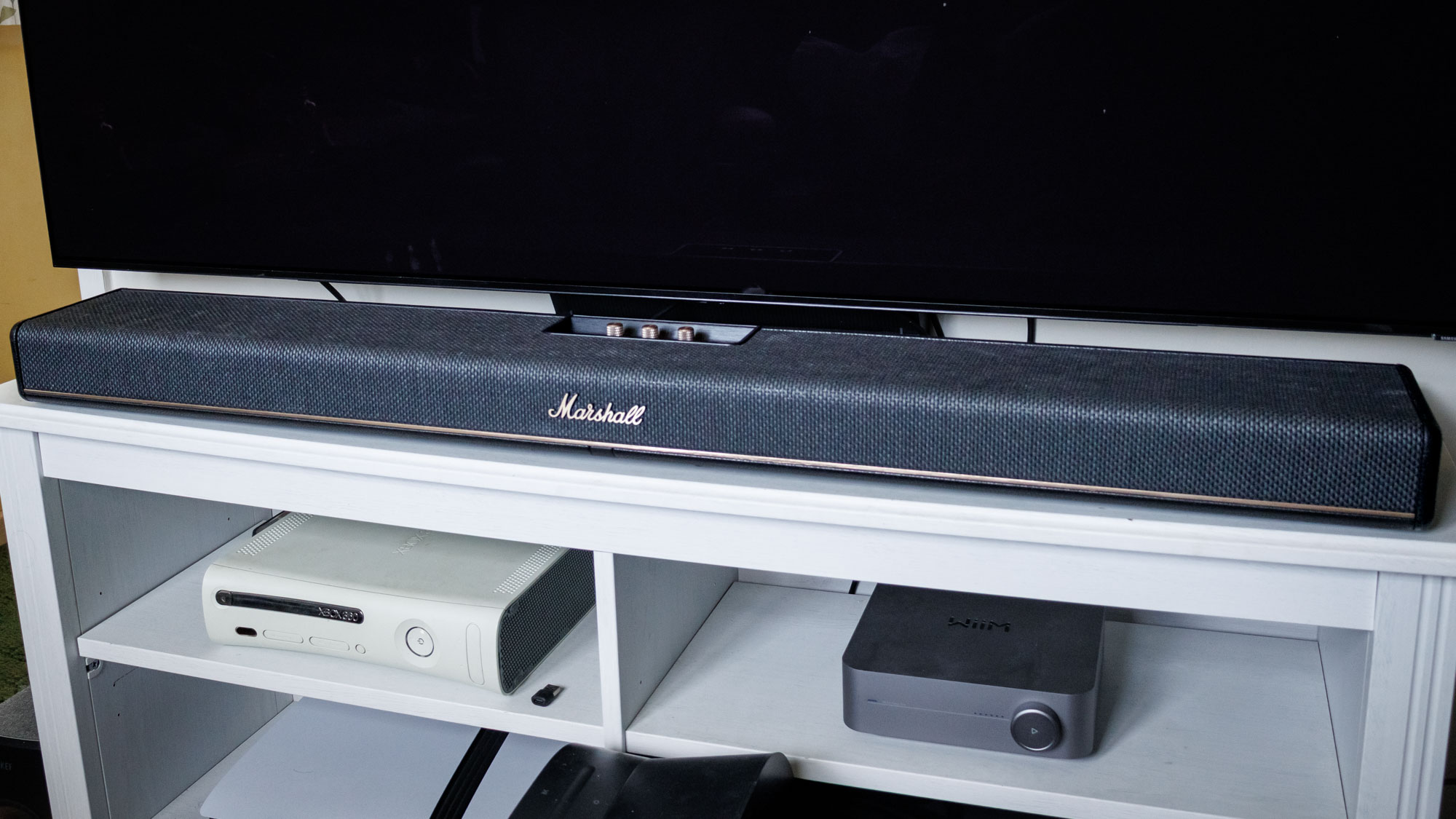
There has been no shortage of the best soundbars released in 2025 — we've been lucky enough to test a whole bunch of them at Tom's Guide. But there's one that's stood out to me over the course of the year,.
Endless hours of arduous testing (see also: watching movies, playing video games and listening to music) told me everything I needed to know about the Marshall Heston 120: That it's one of the best first products I've ever seen.
Marshall had never made a soundbar before it dug its teeth in with the Heston 120. Not that you'd know — the Heston 120 is so very accomplished that it feels like the device of a firm that's got years of under-TV experience under its belt. It looks the part, sounds excellent, and packs in a whole bunch of features to take the fight to the likes of Sonos and Bose.
But what was it that stuck out for me while I was testing the Heston 120, and why do I keep coming back to my time with the soundbar with a degree of fondness generally reserved for friends and family? Let me get soppy-eyed for a second, and I'll tell you all about my brief love affair with Marshall's excellent soundbar.
The Marshall Heston is the best soundbar you can buy if you want to listen to music. Excellent stereo separation sets it apart from the competition, and solid bass reproduction even without a sub make it an excellent solo option. It also happens to be really good for Dolby Atmos movies — the whole package, as it were.
A musical experience
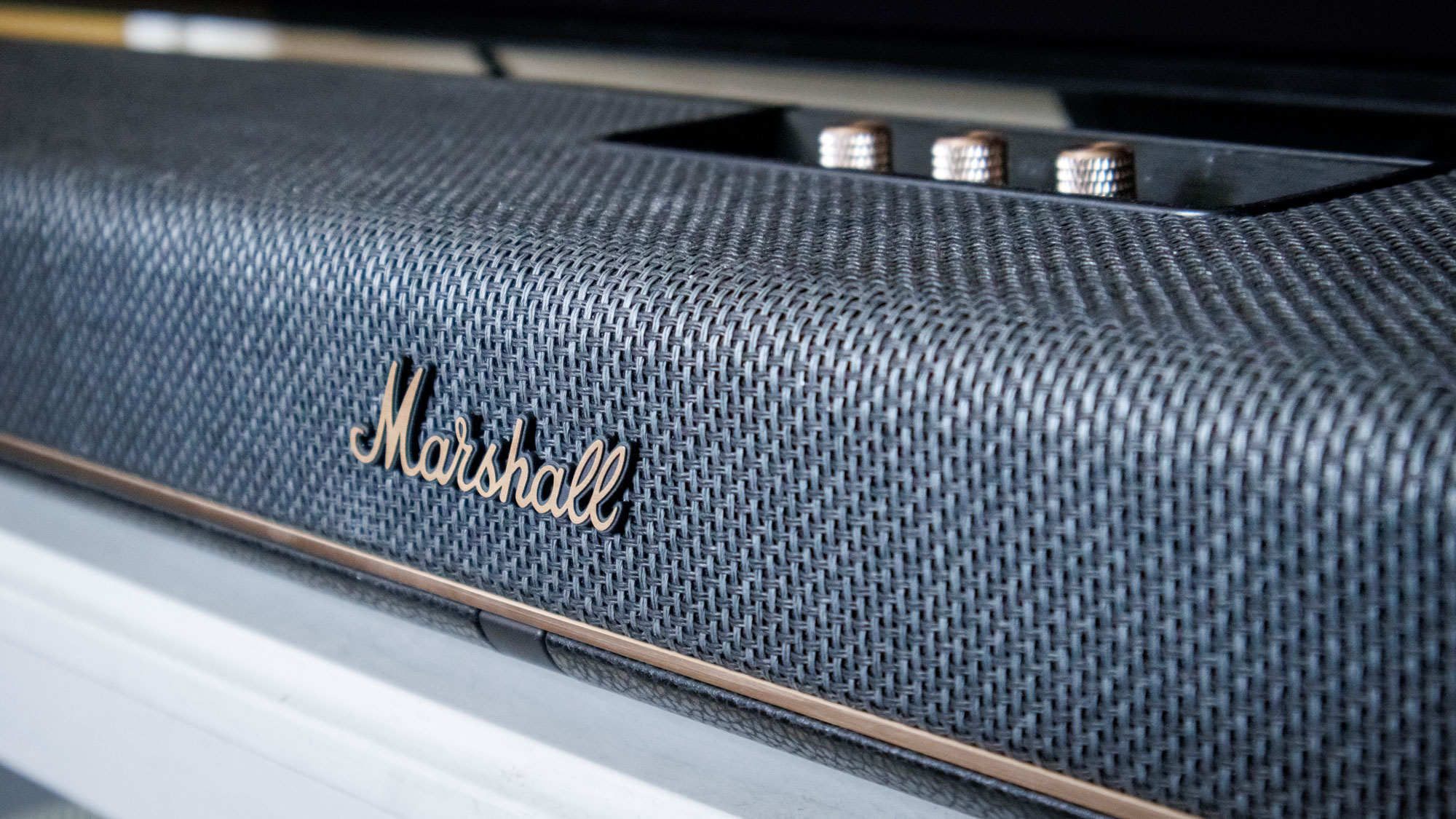
Soundbars are generally pretty good for movies and surround sound, but they always seem to fall apart at the seams when it comes to music. Don't get me wrong, the Sonos Arc Ultra sounds ok when I go to listen to my favorite playlists, but it doesn't sound like something that cost $999. There's a reason that I tend to recommend a pair of stereo speakers if you want to listen to music more than you want to watch movies.
Marshall's first soundbar seems to have been built from the ground up to me not only good at Dolby Atmos, but also at playing music. There's incredible depth to the bass, even if you don't hook up a subwoofer, making music richer than most soundbars. The stereo separation is top notch, somehow outperforming soundbar models that are even larger than the already pretty massive Heston.
It means that beyond just being a soundbar, the Heston 120 is really a living room-based audio center. You really can listen to all your content on the bar with very few drawbacks — and that's not something you can say about everything at this price point.
Get instant access to breaking news, the hottest reviews, great deals and helpful tips.
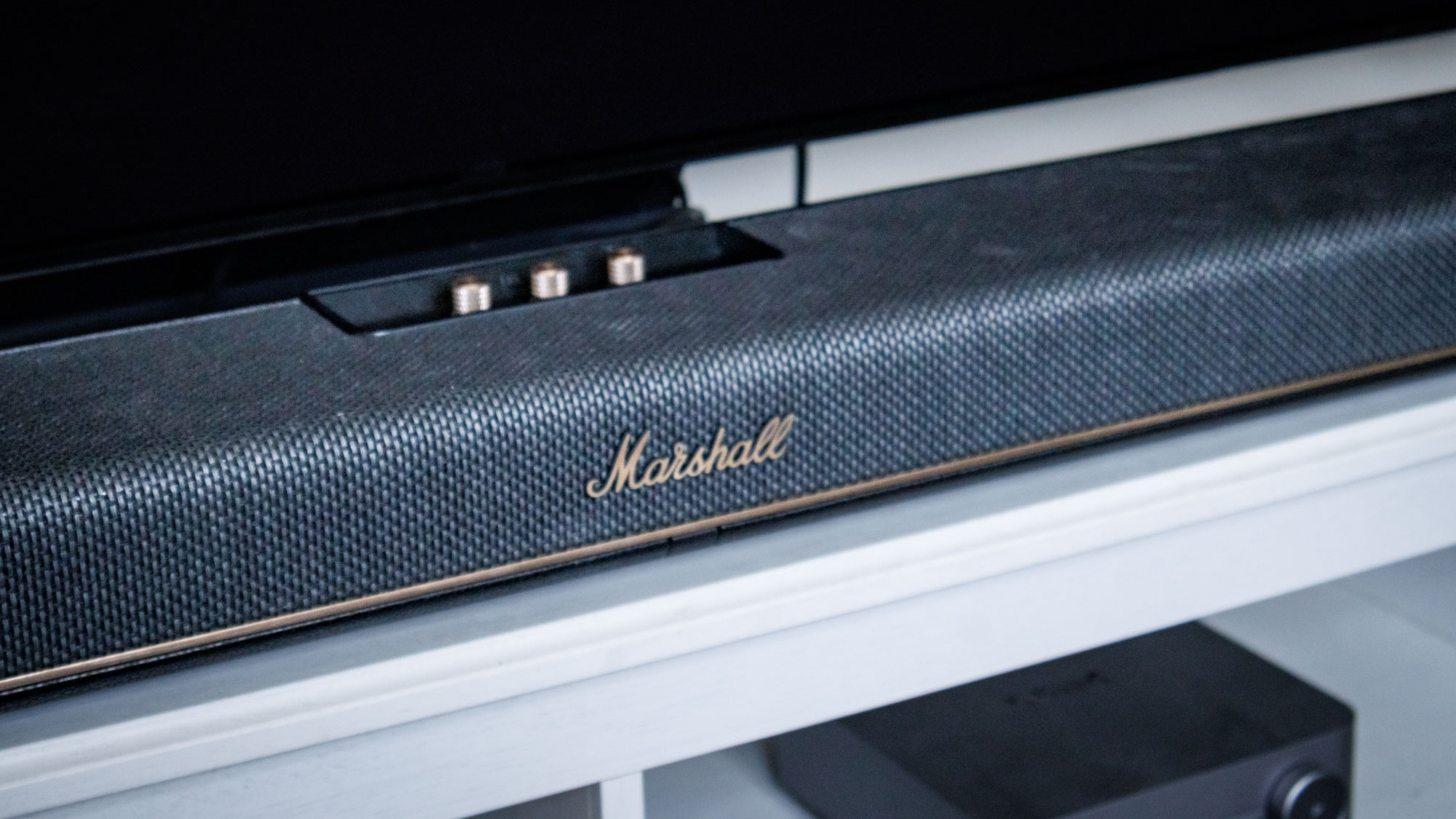
It reminds me of those HiFi systems you used to see almost everyone have in their house. A jack of all trades that happens to be good at just about everything, while packing in loads of features that are easy to use.
Plenty of features
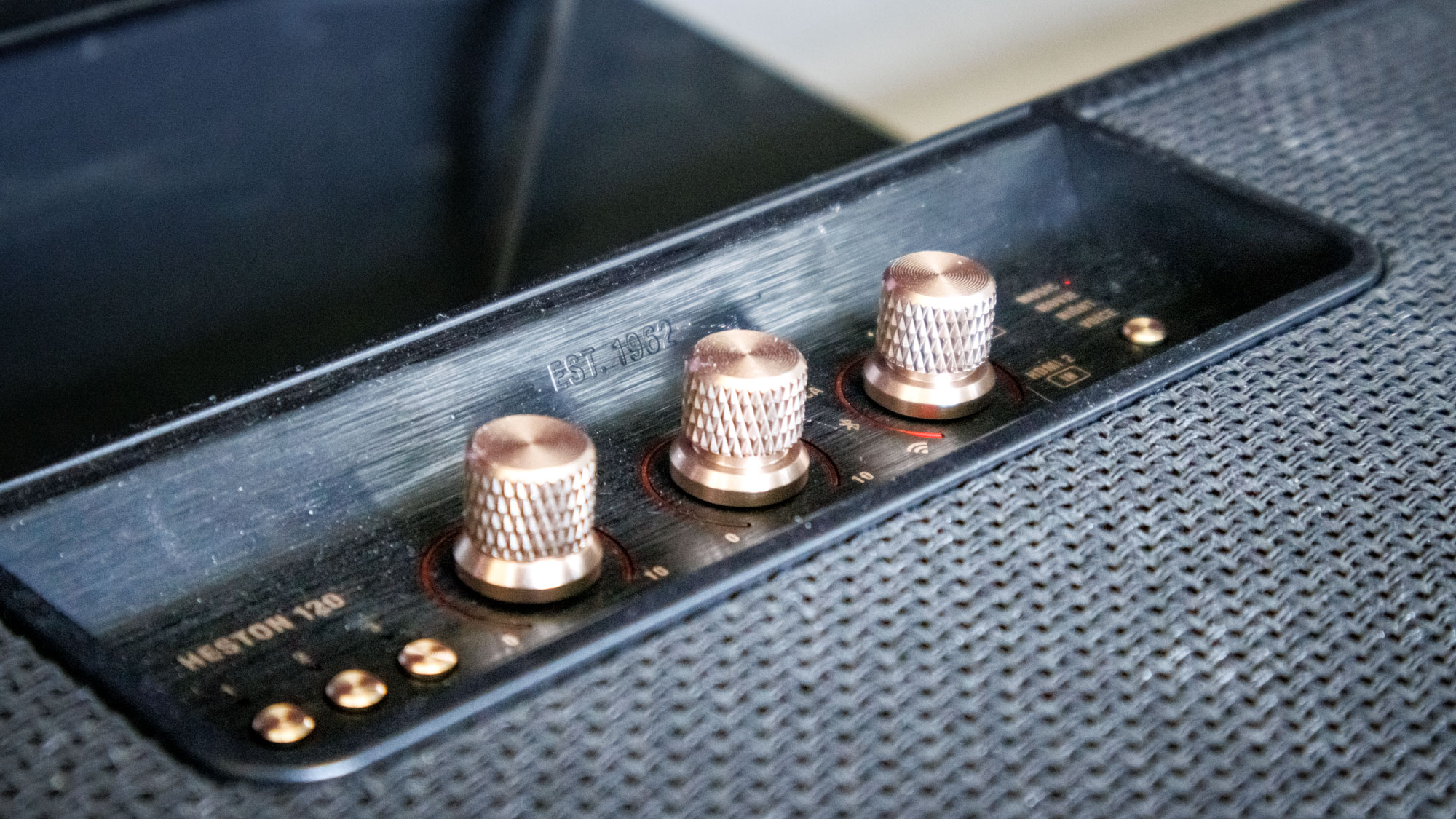
The Heston rivals all the other soundbars that cost the same with a similar feature set. There's the WiFi connection on board which means you can stream from Spotify and Tidal. It even linked up with my Roon system, so I could listen to my library of music from my server.
There's the room tuning feature that works a lot like Sonos' TruePlay system, only with guitar sounds instead of futuristic lazer gun noises. There are sound modes for different times of day, and adjustable EQ so that you can really dial the sound in for your space or to your personal taste.
Then there's the physical controls that sit along the top of the bar — something lacking on pretty much every soundbar out there. It does mean there's no remote control in the box—you either use your phone or the controls—but they're one of my favorite parts of the whole soundbar.
I mean, they look cool, which is already a pretty big bonus. But they also allow such granular control over the sound of the bar that I wish they where included on every single soundbar, ever. They're tactile, almost to the point of "oh no I've been playing with the dials again" when you go to watch Star Wars Episode IV again for the nth time.
Looks matter
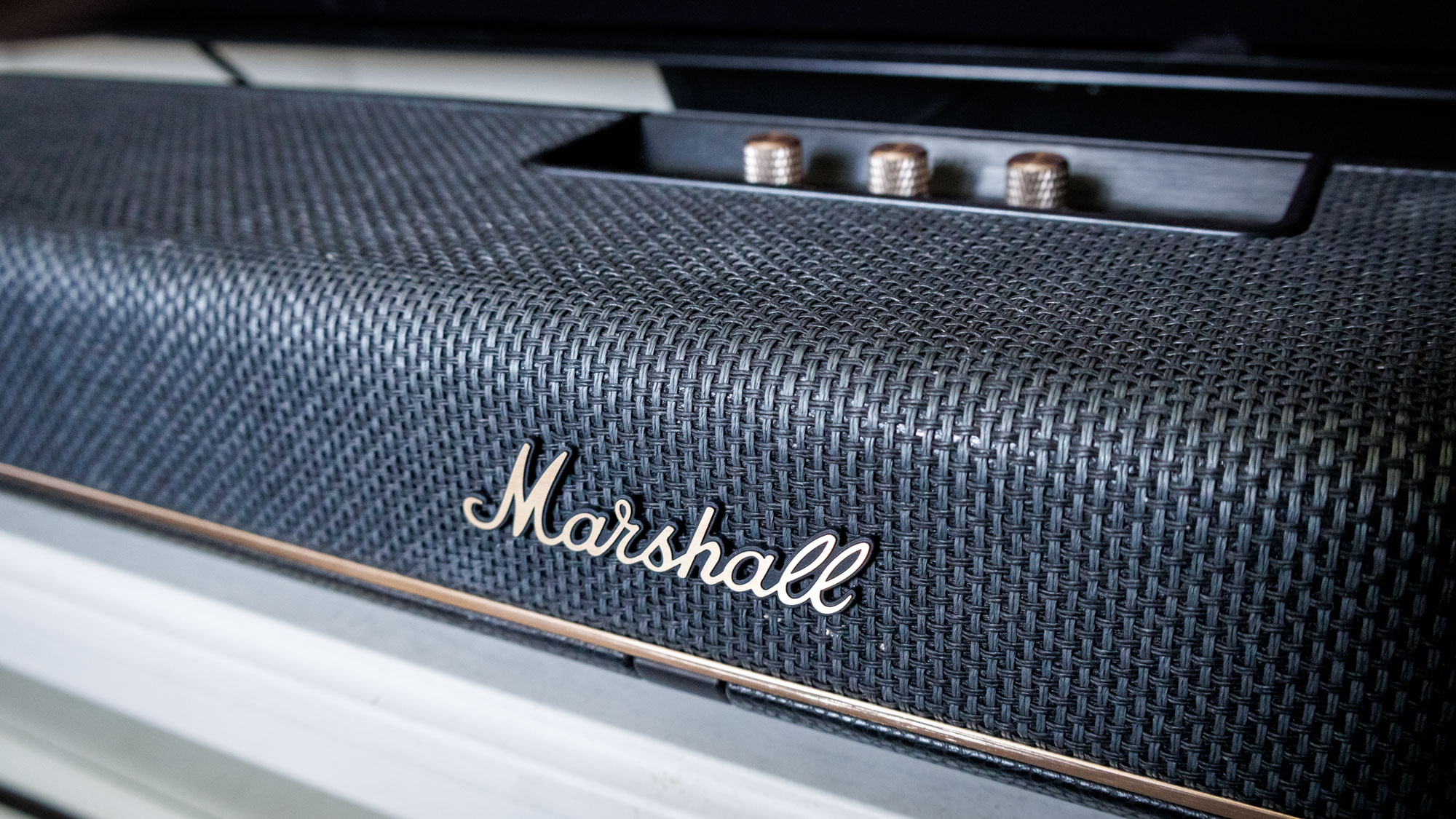
I know I'm shallow, you don't have to tell me. But the way the Marshall Heston 120 looks is so important in how much of an impact it's made on the space is unquestionable. Where soundbars are usually just look some kind of white or gray oblong thing, the Heston 120 looks like an amplifier from the stage stretched out and stuck on your TV unit.
The gold knobs, the massive gold Marshall logo, the whole thing looks amazing. It is a focal point as opposed to something that's supposed to blend in, which definitely divides audiences, but I think it's one of the bar's greatest strengths. There is nothing in soundbar land that looks like the Heston 120 — and that's a very special thing indeed.
So many inputs
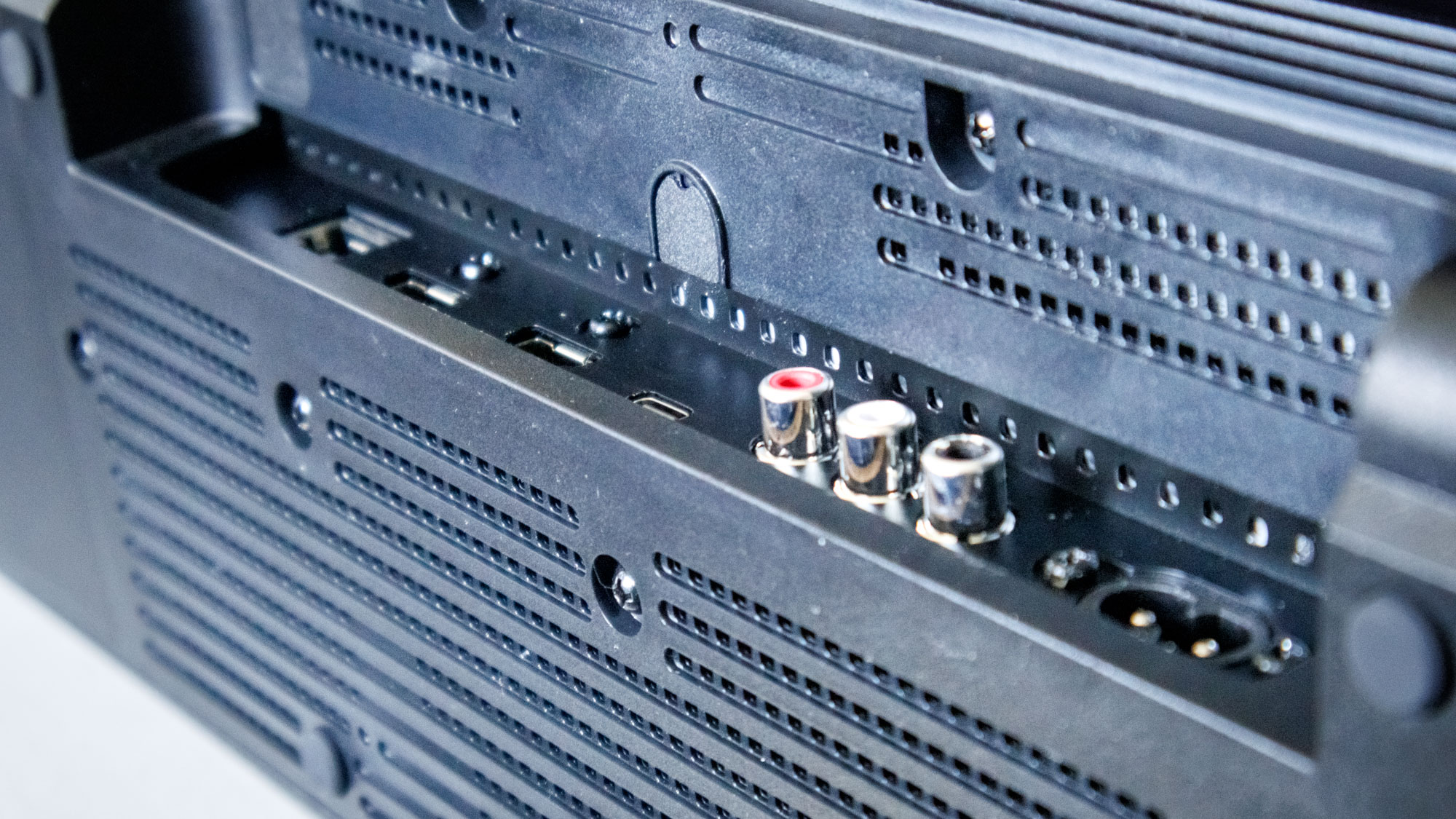
Soundbars generally slum it with one or two useful inputs on the back — not so with the Heston 120. You'll find a pair of HDMI ports, a USB-C port, and a full RCA connector so that you can hook up something like a turntable and use it to listen to your records.
It cements the idea that the Heston is designed to be more than 'just' a soundbar. It's the musical hub of a space, tying everything together in a neat bow thanks to its standout design and excellent sound. The Sonos Arc Ultra is better at Dolby Atmos, so it's arguably a better soundbar. But the Marshall Heston 120 brings everything together so well that it's definitely the better all-round product.
Follow Tom's Guide on Google News to get our up-to-date news, how-tos, and reviews in your feeds. Make sure to click the Follow button.
More from Tom's Guide
- I've reviewed 18 pairs of headphones this year so far — and these are the only 3 I recommend
- Mark your calendars — iPhone 17 release date may have just leaked
- 5 best psychological thriller movies to stream on Netflix

Tammy and her generous collection of headphones have found a new home — Tom's Guide! After a two-and-a-half-year stint as iMore's resident audiophile, Tammy's reviews and buying guide expertise have more focus than ever on Tom's Guide, helping buyers find the audio gear that works best for them. Tammy has worked with some of the most desirable audio brands on the planet in her time writing about headphones, speakers, and more, bringing a consumer focussed approach to critique and buying advice. Away from her desk, you'll probably find her in the countryside writing (extremely bad) poetry, or putting her screenwriting Masters to good use creating screenplays that'll never see the light of day.
You must confirm your public display name before commenting
Please logout and then login again, you will then be prompted to enter your display name.
